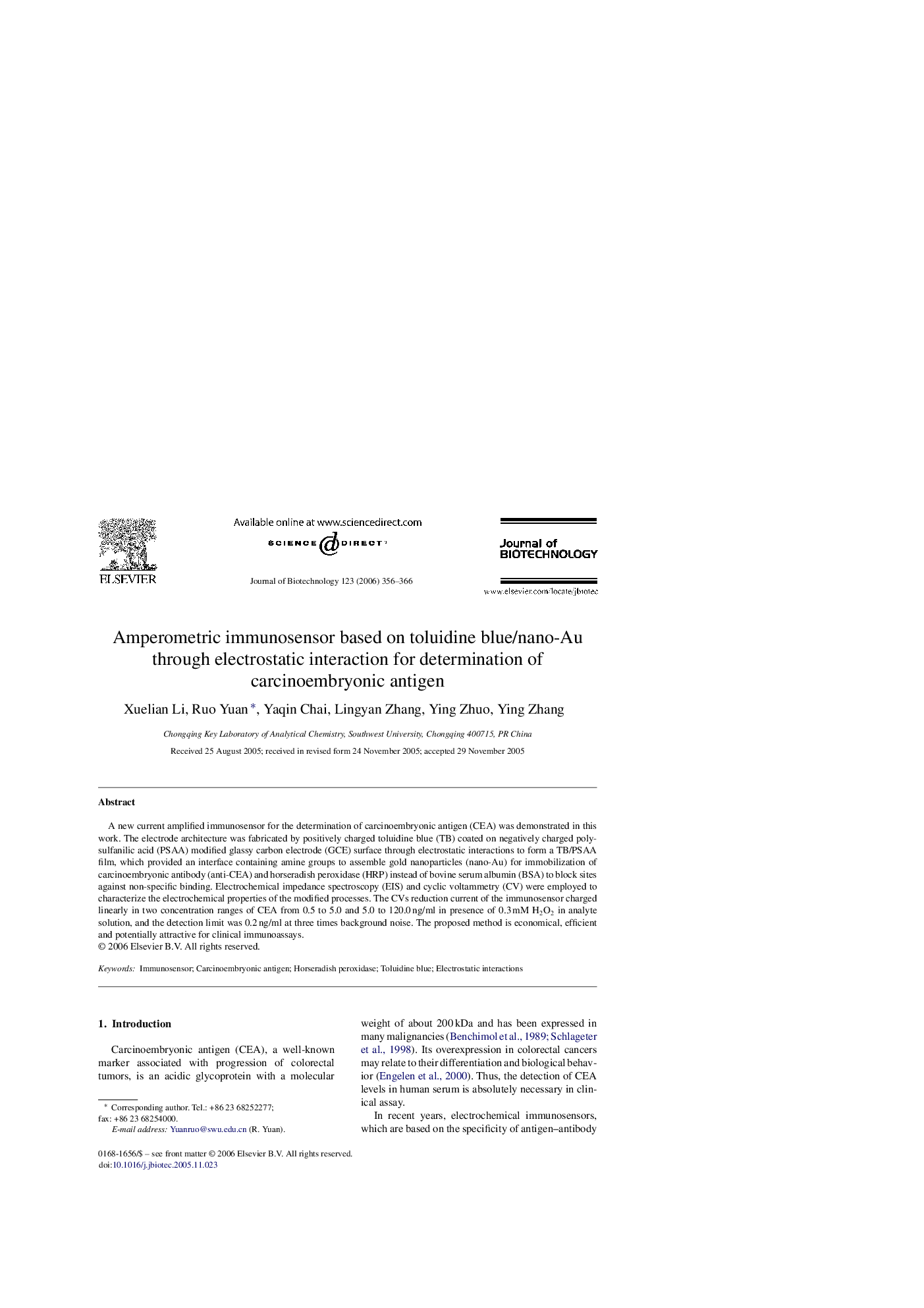| Article ID | Journal | Published Year | Pages | File Type |
|---|---|---|---|---|
| 25610 | Journal of Biotechnology | 2006 | 11 Pages |
A new current amplified immunosensor for the determination of carcinoembryonic antigen (CEA) was demonstrated in this work. The electrode architecture was fabricated by positively charged toluidine blue (TB) coated on negatively charged poly-sulfanilic acid (PSAA) modified glassy carbon electrode (GCE) surface through electrostatic interactions to form a TB/PSAA film, which provided an interface containing amine groups to assemble gold nanoparticles (nano-Au) for immobilization of carcinoembryonic antibody (anti-CEA) and horseradish peroxidase (HRP) instead of bovine serum albumin (BSA) to block sites against non-specific binding. Electrochemical impedance spectroscopy (EIS) and cyclic voltammetry (CV) were employed to characterize the electrochemical properties of the modified processes. The CVs reduction current of the immunosensor charged linearly in two concentration ranges of CEA from 0.5 to 5.0 and 5.0 to 120.0 ng/ml in presence of 0.3 mM H2O2 in analyte solution, and the detection limit was 0.2 ng/ml at three times background noise. The proposed method is economical, efficient and potentially attractive for clinical immunoassays.
